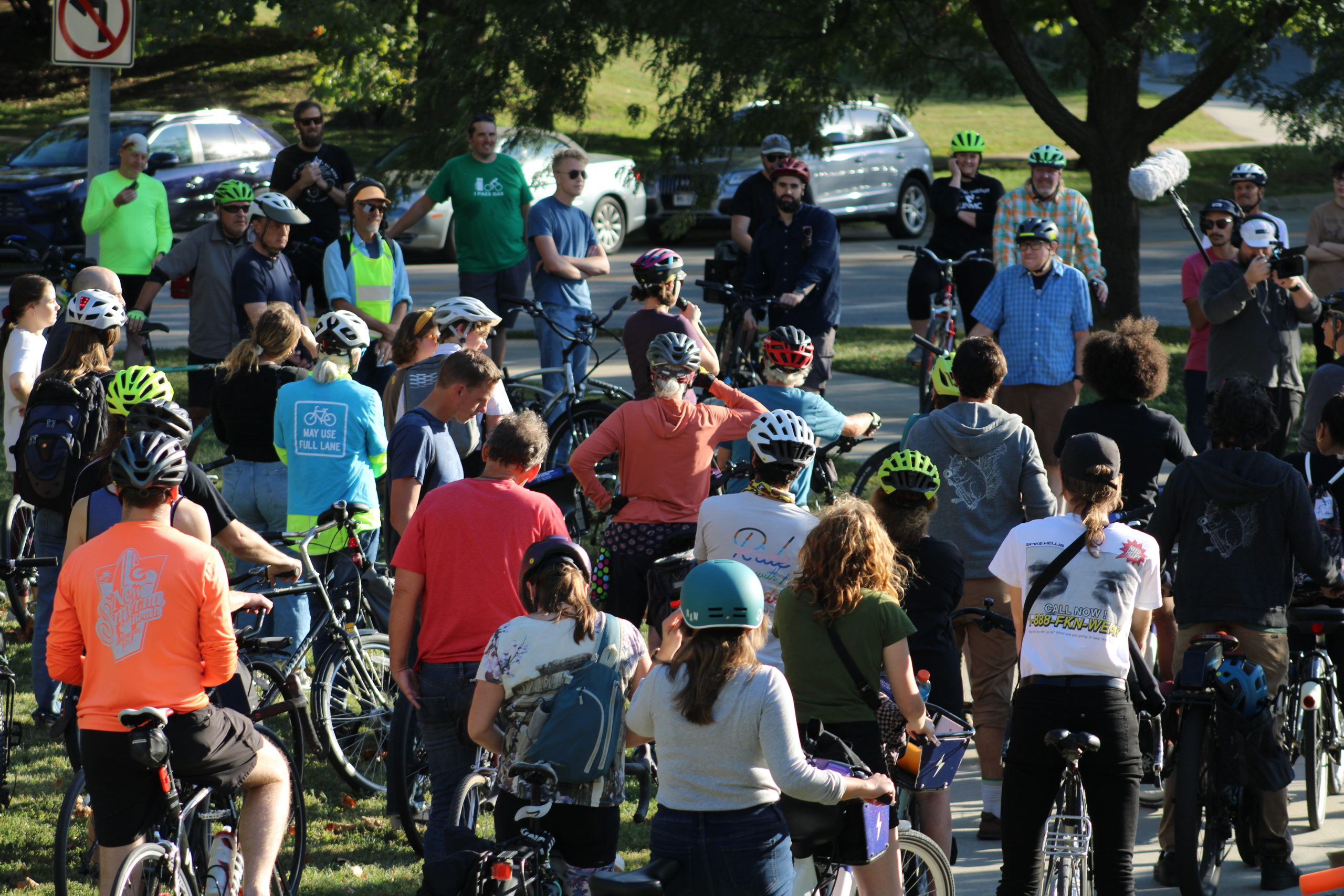Curtis Bryant is a long time friend of Mode Shift Omaha and occasional contributor to our blog.
The book How to Live Well Without Owning a Car, by Chris Balish, introduced me to this continuum: car dependent > car lite > car free. The ideas of being car dependent and car free turn the conventional assumption that cars mean freedom on its head. Instead, it assumes that freedom comes from reduced reliance on cars.*
Because I drive a car and also use transit, bicycles, and my feet for transportation, I’m in the “car lite” camp. Car-lite living does offer freedom. For example, when I’m going downtown and don’t want to pay for parking or waste time and gas looking for a parking place, I know how to use transit or my bicycle (or both on the same trip) instead of driving. A car-dependent person might assume that the choice is between driving and not going. I know that parking is a choice, and that knowledge is power.
| Transportation Mode | Pro | Con |
| Driving my car |
|
|
| Transit |
|
|
| Bicycling |
|
|
| Walking |
|
|
By “More social than driving,” I mean that, while cars encase people behind walls and glass, transit, cycling, and walking don’t. It’s far easier to meet strangers using these modes of transportation.
Most “cons” to transit depend most on the capabilities and limits of a given transit system, not transit as such. I can imagine a vast network of transit systems that, together, created a nearly unlimited service area. Some transit systems do run around the clock or nearly so. Service frequency, shelters, and other features can improve given enough funding.
Slower Can Be Better
Slower travel time isn’t necessarily a disadvantage, however. Walking and cycling, for example, can combine aerobic exercise with travel, potentially saving time. Here’s an example.
Jennifer drives 10 minutes to the supermarket, shops for 30 minutes, drives 10 minutes home, puts away the groceries for 5 minutes, drives 10 minutes to the gym, runs on the treadmill for 30 minutes, and drives 10 minutes home. 10 + 30 +10 + 5 +10 + 30 + 10 = 105 minutes
Meanwhile, her neighbor Jessica rides her bike for 20 minutes to the supermarket, shops for 30 minutes, cycles home for 20 minutes, and puts the groceries away in 5 minutes. 20 + 30 + 20 + 5 = 75 minutes. Combining exercise and travel saves Jessica half an hour compared to Jennifer.
Here’s another example.
After a hard day at work, Zach drives home keeping his eyes glued to the road in rush-hour traffic for 20 minutes, arriving home stressed out and saying he’s hardly had time to think.
Zach’s co-worker and neighbor Ted also had a hard day at work. He comes home by Metro Transit. Because he isn’t driving, he relaxes during the 30-minute trip, thinking about the day and his family’s plans for the evening. He arrives home with a smile.
Ted would be easier to welcome home because he has given himself time to think.
Though I can shower at work after cycling, lately I’ve preferred to arrive to work fresh. On those days, I bring my bike on the bus in the morning and cycle home. I’ve sometimes done when I knew I wouldn’t have time for a workout otherwise. It takes me only 15 minutes longer than driving—far less time than a trip to the gym—and feels so good!
As a bonus, I love having my bike at the office. It’s ideal for crossing campus and lunch-hour errands.
A car-lite lifestyle isn’t a single path. It’s the freedom to choose how I want to make a given trip on a given day. Metro Transit and Omaha’s progress in bicycle-friendliness and walkability—thanks in part to Mode Shift Omaha’s advocacy—make this freedom possible.
*This continuum applies to people who drive less than they might or not at all because they so choose.

